Listen to sounds of Shenzhen, a journey of discovery
Video by Lin Jianping
Armed with headphones, a microphone, a windshield and a digital recording device, Marcel Zaes Sagesser captures sounds of Shenzhen: hoards of commuters in constant motion, impatient bike honks, yelling from street vendors’ loudspeakers, WeChat payment alerts, roaring buses, cars or trains, river flowing and bird chirping.
“The charm of sound in part is exactly because it’s invisible but it’s everywhere; it’s all around us,” said Sagesser, an assistant professor in the School of Design at Southern University of Science and Technology (SUSTech).
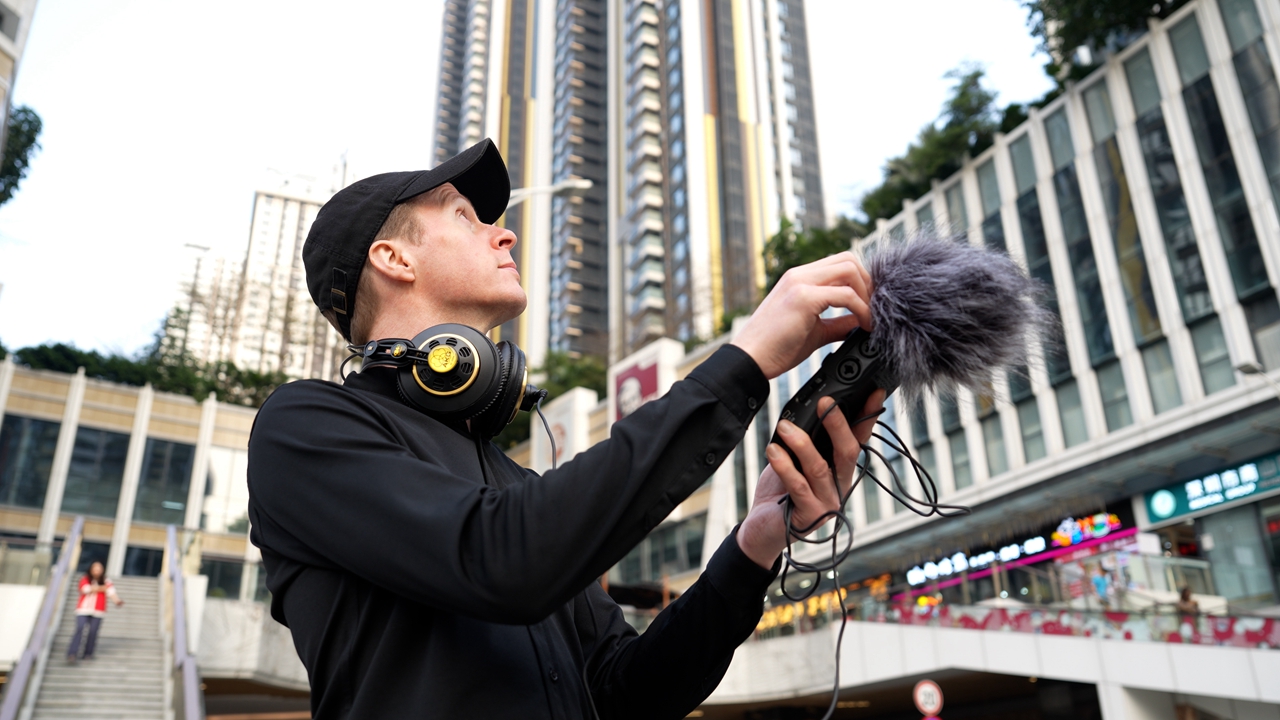
Marcel Zaes Sagesser collects sounds in a shopping area in Nanshan District in late February. Photos by Lin Jianping
The Swiss sound researcher and artist moved to Shenzhen last year from the United States where he finished his Ph.D. at Brown University. He now teaches sound design for undergraduate students majoring in industrial design.
He does field recording in nature and densely populated urban areas, then maps the sound recordings in computer software, and creates interactive sound maps of the city to understand how the sonic world in the city functions.
Sagesser said that noise in Shenzhen is loud in urban areas but natural and environmental sounds are also very dominant in the soundscape of the city. “What is so charming, maybe is special about Shenzhen in sound for me is that there are always urban sounds mixed with some natural sounds. Like this very moment we hear traffic, we hear water but we also hear a lot of birds, so it’s not that the city and nature are two distinct parts; they are always mixed and blended.”
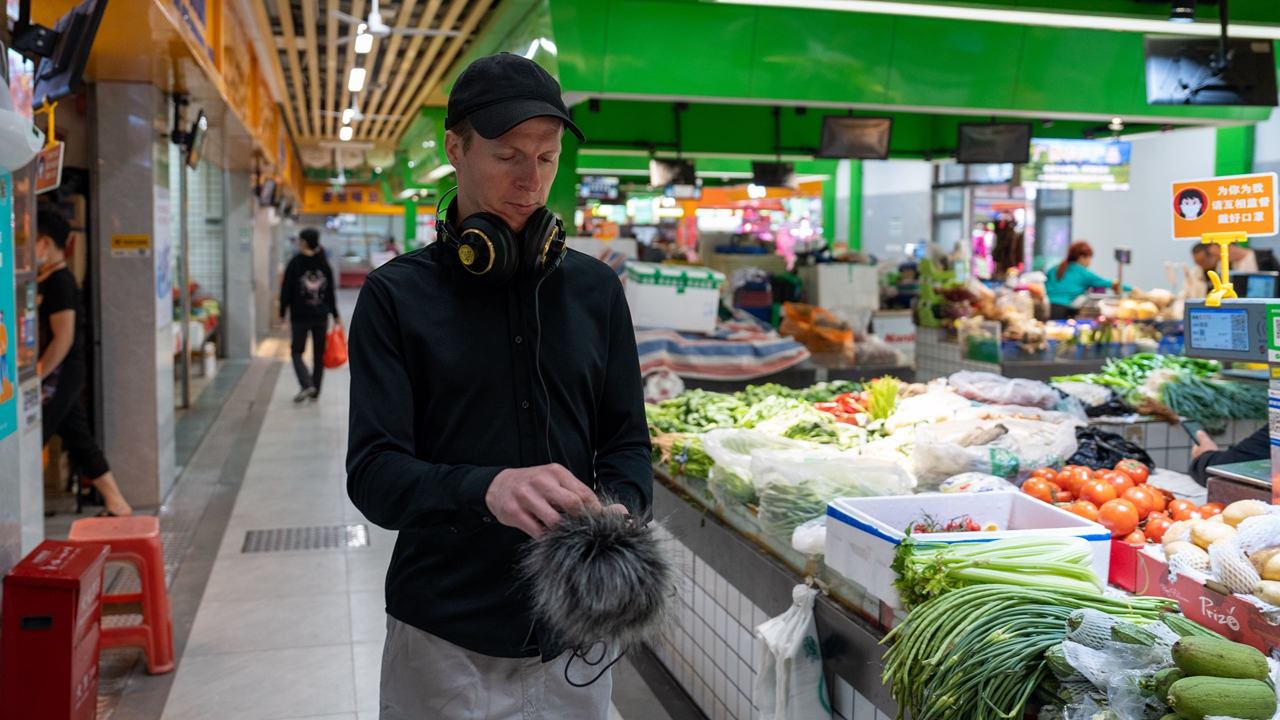
Marcel Zaes Sagesser collects sounds at a wet market in Nanshan District.
In Shenzhen, Sagesser collects sounds mostly in Metro stations, train stations, streets, sidewalks, shopping malls, supermarkets, wet markets and random places where there are a lot of people. He walks in the city with a microphone as a way to understand the city through sounds.
This kind of working method, termed “sound walking,” focusing on listening to the environment while walking, was used in his and Xu Binghuang’s “Unwalking” project. The project was designed for the Pingshan subvenue exhibition of the ninth Bi-City Biennale of Urbanism\Architecture (UABB) last year.
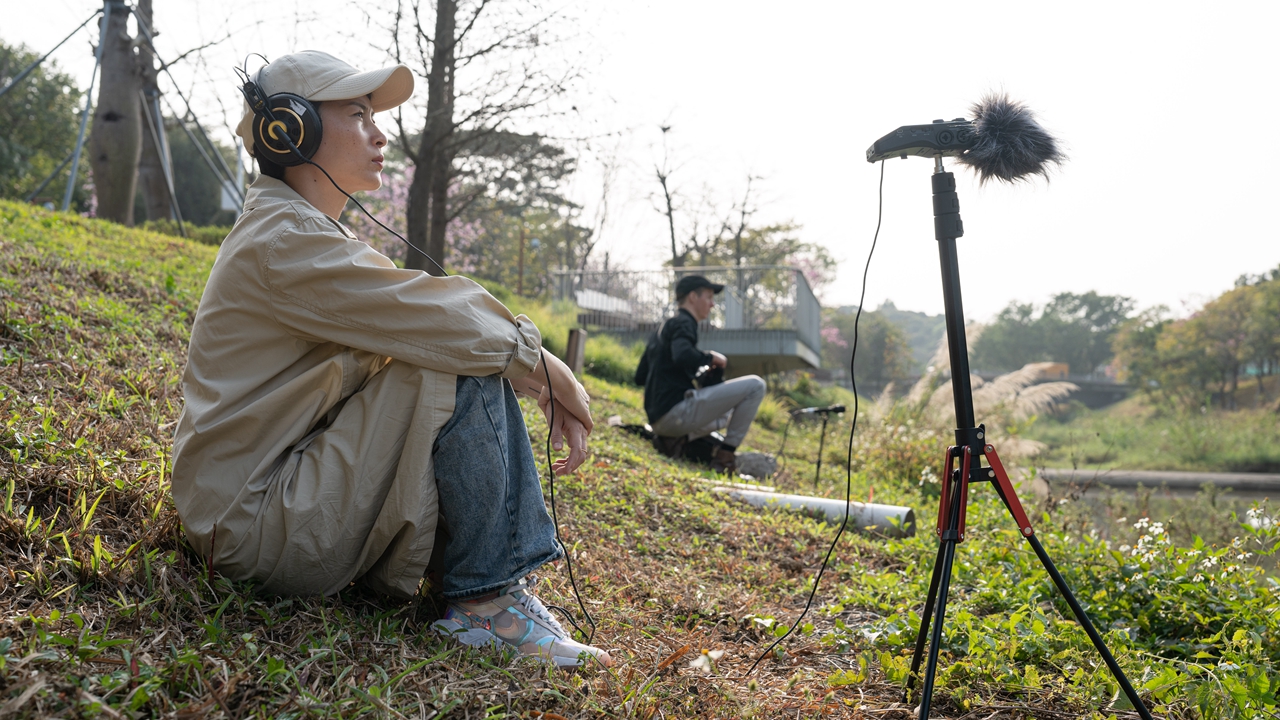
Xu Binghuang (front), a research assistant in Marcel Zaes Sagesser’s team at SUSTech’s School of Design, does field recording with Sagesser at the campus.
They had six student groups working on this project, with each group creating one sound work. Using ethnographic methods, they interviewed locals and tourists and did field recordings at the centuries-old Hakka compound, the Dawan Ancestral Residence.
“Sound was much more blurred at the compound because inside it you heard the traffic from outside and when you were outside you still heard the birds’ sounds from inside,” said Sagesser, adding that they also recorded in urban villages, at some workshops and by the Pingshan River.
The final sound works are associated with both the past, like the traditional craft sounds, and the future, with some sounds created by students using synthesizers in the studio, bringing hidden histories and stories to life and helping listeners to see this old site in a new light.
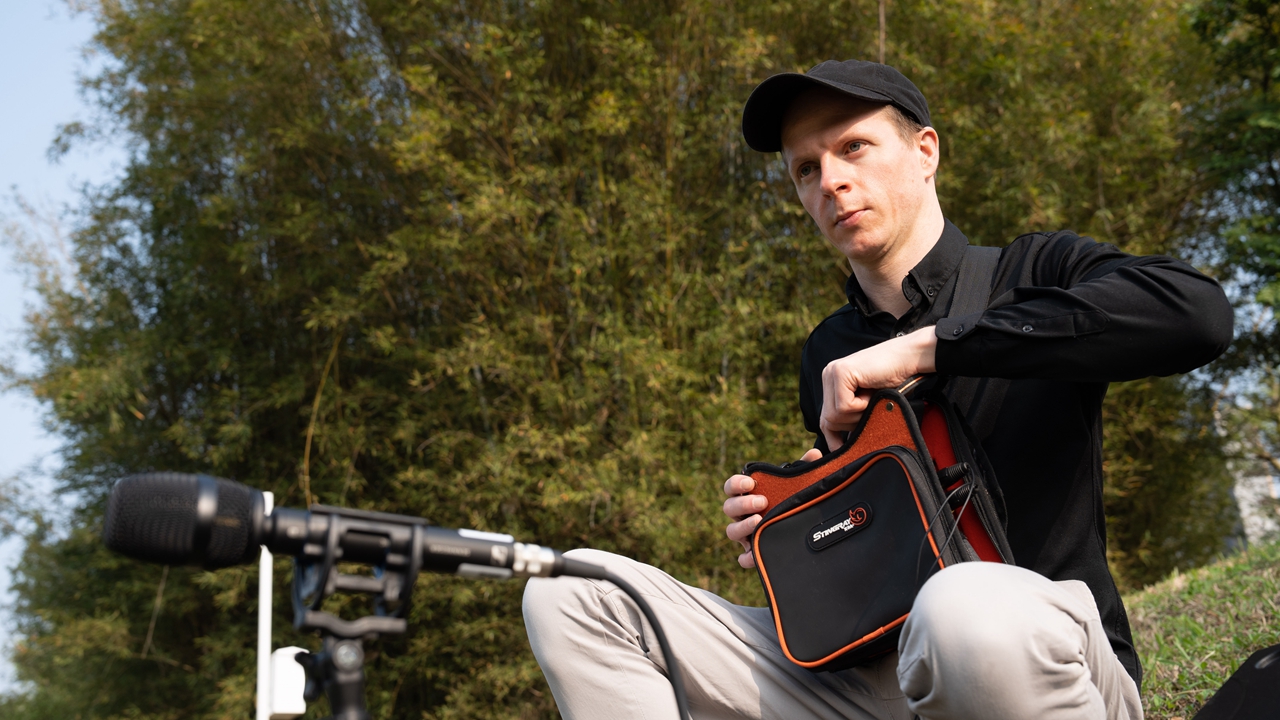
Marcel Zaes Sagesser does field recording in nature.
Sagesser explained that “Unwalking” means “undo” and “walking.” “We undo or go back in the history of the place where we are walking to uncover things or sounds which normally remain invisible or inaudible.” At the opening of the exhibition Dec. 3, 2022, visitors rambled in the Dawan Ancestral Residence while listening to a piece from the project played on mobile devices.
“We would like the public to gain an additional understanding of what Dawan Ancestral Residence is. … When they listen to this project that our students designed, they get a different experience that actually is sort of oscillating between the past and the future,” said Sagesser.
“It’s not so much that the charm [of sounds] is already there; it depends on what we do with sounds, how we use sounds as an opportunity to actually make something, make an intervention, how we change sounds with technology or create new sounds, so for me that’s where the charm of sounds lies,” he said.
In Sagesser’s academic research, he focuses on the manifold ways in which humans craft their relationships with sounding technologies, and how sound is always embedded in a larger socio cultural context. He said that traditionally design was not so much connected with sound, but SUSTech’s School of Design is quite progressive in that it not only designs objects but also focuses on designing experiences for the future.
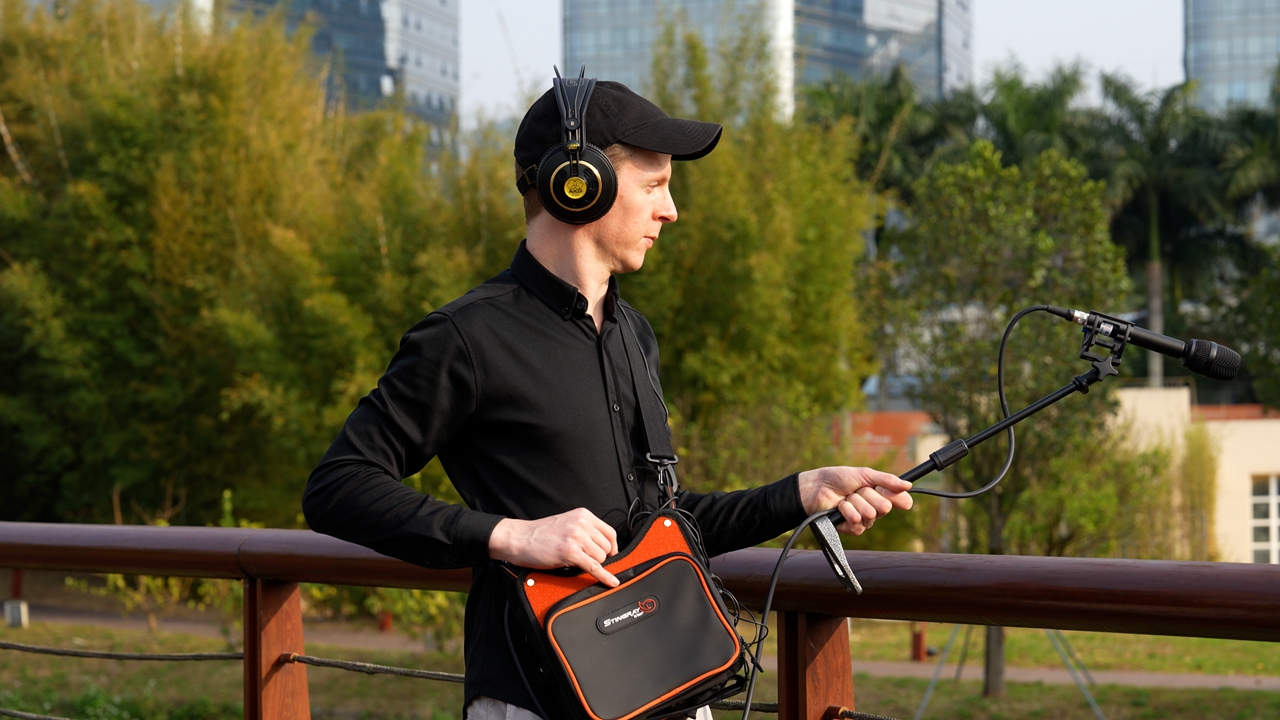
Marcel Zaes Sagesser collects sounds by the river at the SUSTech campus in Nanshan District.
“Sound research is not so common. … It’s a very special area. … It’s not such a coincidence that Shenzhen would have a job like this, which is the ‘City of Design,’ which is associated with new technologies and developing new technologies, so sound is a huge part of that,” he said.
“When I received this offer here and I realized SUSTech is a research university, at the School of Design, I found this to be my best option because it would let me do exactly this kind of research that I want to do.”
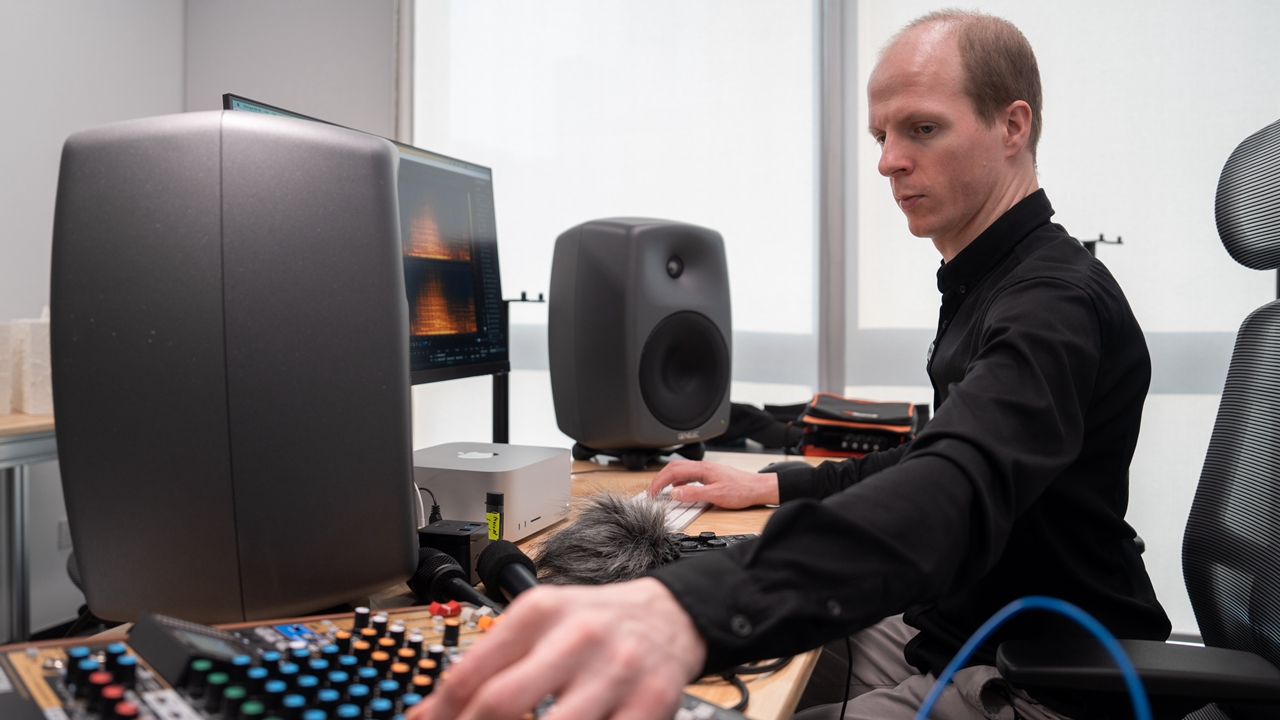
Marcel Zaes Sagesser processes sound works at his office at the School of Design at SUSTech.
Sagesser holds a Ph.D. in computer music and multimedia from Brown University and master’s degrees in media arts and in music composition from Bern University of the Arts and Zurich University of the Arts, respectively. He has released 11 music albums and exhibited his sound artworks at festivals globally.
Last year, he performed with Shenzhen artists at an electronic music gig at Nantou Ancient Town. In Shunde, he just participated in an exhibition, playing a vocal piece in a room full of loudspeakers. The piece was composed based on the sounds he collected at a fish pond in Shunde and the piece was recorded with students from the Chinese University of Hong Kong, Shenzhen.
“The music or the art that I’m creating is always somehow grounded in the research that I’m doing,” said Sagesser. “How can we digitally create new sounds? … Many of my sound works or music works are much more about creating sonic states. … I think the word for this would be ‘sonic architecture.’ It’s like using sound to create a feeling of a place. … You can sit in and be with it, like you sit in a house,” Sagesser explained.
Having been in Shenzhen for a year, Sagesser said that the city, “with a subtropical climate and a geographic location between the ocean and the hills, between the ocean and the continent,” has influenced him in many ways.
“The water, especially many rivers, the seaside, the Pingshan River, the Dasha River, [has influenced me]. I’ve also started working with hydrophones to record rivers. Also the Pearl River Delta, in and around Guangzhou and Shunde, all of that has changed my research and my artworks.”
In this visual-dominated world, Sagesser suggests people should pay more attention to the sounds because “you will miss a lot of things, information and beauty if you don’t pay attention to the sounds. If people have more awareness about the sounds, more people will agree that we need better sound design for the city; we need better-sounding trains, better-sounding cars; we need better tools and experiences designed for the city.”